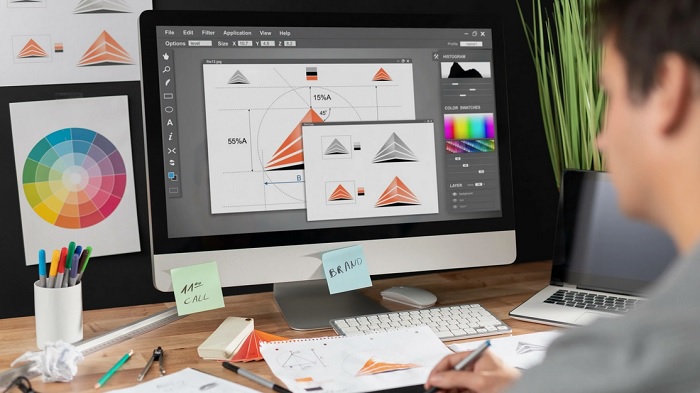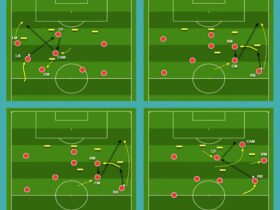A product design agency plays a key role in turning an idea into a reality. Combining artistic vision with commercial acumen enables the creation of products that are not only beautiful, but also deliver business results.
In an era where user experience dictates market success, partnering with an elite product design services provider has evolved from a tactical choice to a strategic imperative. This comprehensive analysis examines how leading agencies blend artistic vision with commercial acumen to create products that don’t just look beautiful—they drive measurable business outcomes.
The Evolution of Product Design: From Craft to Strategy
The discipline of product design has undergone a radical transformation over the past decade. What was once primarily concerned with aesthetics and functionality has expanded into a multidimensional practice that encompasses user psychology, business strategy, technical feasibility, and market positioning.
When business leaders ask «what is a product design agency» today, the answer is far more complex than it was five years ago. The modern product design agency operates as a strategic partner, deeply embedded in their clients’ innovation ecosystems. They don’t just execute on briefs—they help define the problems worth solving.
42%
of startups fail due to no market need—a problem strategic design can solve
This evolution is particularly evident in specialized domains like medical product design, where regulatory compliance, user safety, and clinical workflows demand a rigor that goes far beyond conventional ui product design. The best product design companies have developed methodologies that balance creative innovation with disciplined execution.
Deconstructing Digital Product Excellence
The phrase «what is digital product design» encompasses everything from mobile applications to enterprise software platforms. At its core, digital product design represents the intersection of human behavior, technology capabilities, and business objectives.
Leading digital product design companies approach projects through multiple lenses:
The Human Lens
Understanding user needs, motivations, and limitations through rigorous research methods. This human-centered approach ensures solutions solve real problems for real people.
The Business Lens
Aligning design decisions with commercial objectives, market positioning, and operational capabilities. The top product design consultancy practices speak the language of business outcomes, not just design awards.
The Technical Lens
Designing within the constraints of current technology while anticipating future capabilities. This pragmatism separates realistic innovations from conceptual fantasies.
Case Study: Financial Services Transformation
A major bank partnered with a digital product design agency to redesign their small business banking platform. Through iterative prototyping and user testing, the team identified that business owners prioritized cash flow visibility over traditional banking features.
The resulting design emphasized forecasting tools and integrated accounting—features that reduced customer churn by 34% and increased product adoption by 52% within the first year.
The AI Revolution in Product Design
The emergence of artificial intelligence has fundamentally altered the product design and development landscape. AI for product design isn’t just about automation—it’s about augmentation.
Progressive product design firms are leveraging AI in several transformative ways:
Generative Design Exploration
Algorithms that can generate thousands of design variations based on specified constraints, allowing human designers to focus on curation and refinement rather than iteration.
Predictive User Analytics
Machine learning models that predict user behavior and preferences, informing design decisions with unprecedented accuracy before a single line of code is written.
Personalization at Scale
AI product design enables interfaces that adapt to individual users in real-time, creating experiences that feel personally crafted for each person.
«The most successful product design team structures now include data scientists and machine learning specialists alongside traditional designers and researchers. This cross-pollination of expertise is where breakthrough innovations emerge.» — Elena Rodriguez, Chief Design Officer at TechVision
The Integrated Approach: Service and Product Design Convergence
Modern consumers experience brands through interconnected touchpoints—digital and physical, human and automated. This reality has blurred the lines between service and product design, demanding a holistic approach to experience creation.
The leading product design and development agency recognizes that they’re designing ecosystems, not isolated artifacts. This systems thinking approach considers how every component interacts—from the initial marketing touchpoint to post-purchase support and beyond.
This holistic perspective is particularly valuable when undertaking comprehensive digital transformations that include website redesign services. The most effective redesigns consider how the website functions within the broader customer journey, not as an isolated destination.
Building World-Class Product Design Capabilities
For organizations looking to elevate their product offerings, the question isn’t just «what is product design» but «how do we build or access exceptional design capabilities?»
Most companies pursue one of three approaches:
In-House Team Development
Building internal design expertise through hiring and development. This approach offers maximum control but requires significant time and resource investment.
Full Agency Partnership
Engaging a product design services company for end-to-end project delivery. This provides immediate access to elite talent but may create dependency.
Hybrid Models
Leveraging a team extension approach that blends internal and external talent. This flexible model allows companies to scale design capabilities up or down as needs evolve.
67%
of enterprises now use hybrid design teams combining internal and external talent
The team extension model has gained particular traction among organizations that value both external perspective and institutional knowledge. This approach allows companies to maintain strategic direction while accessing specialized skills that might not justify full-time hires.
Measuring Design Impact: Beyond Dribbble Likes
The maturation of design as a business discipline has brought increased scrutiny on measurement and ROI. The best product design and development services now include robust measurement frameworks that connect design decisions to business outcomes.
Progressive design strategy firms track metrics across multiple dimensions:
Experience Quality
User satisfaction, task success rates, error reduction, and accessibility compliance.
Business Impact
Conversion rates, customer retention, support cost reduction, and revenue attribution.
Operational Efficiency
Development velocity, design system adoption, and component reuse rates.
This data-driven approach has elevated design from a subjective discipline to a quantitatively measurable business function. When evaluating product design companies near me, forward-thinking leaders now request evidence of measurable business impact alongside portfolio presentations.
The Future Landscape: Emerging Trends in Product Design
As we look toward the future, several trends are shaping the next evolution of product design and innovation:
Ethical by Design
Increasing focus on privacy, digital wellbeing, and ethical considerations embedded into design processes.
Cross-Reality Experiences
Seamless movement between physical, augmented, and virtual interfaces within integrated experiences.
Generative Interfaces
UI that dynamically adapts to context, user skill level, and immediate needs rather than presenting fixed layouts.
The top product design firms are already experimenting with these concepts, recognizing that competitive advantage will increasingly come from experience innovation rather than feature parity.
AS
About the Author
Dr. Anya Sharma is a product strategy consultant and former design lead at multiple Fortune 500 companies. With over 15 years of experience spanning healthcare technology, financial services, and consumer products, she advises organizations on building design capabilities that drive measurable business impact. Dr. Sharma holds a PhD in Human-Computer Interaction from Stanford University.








Leave a Reply